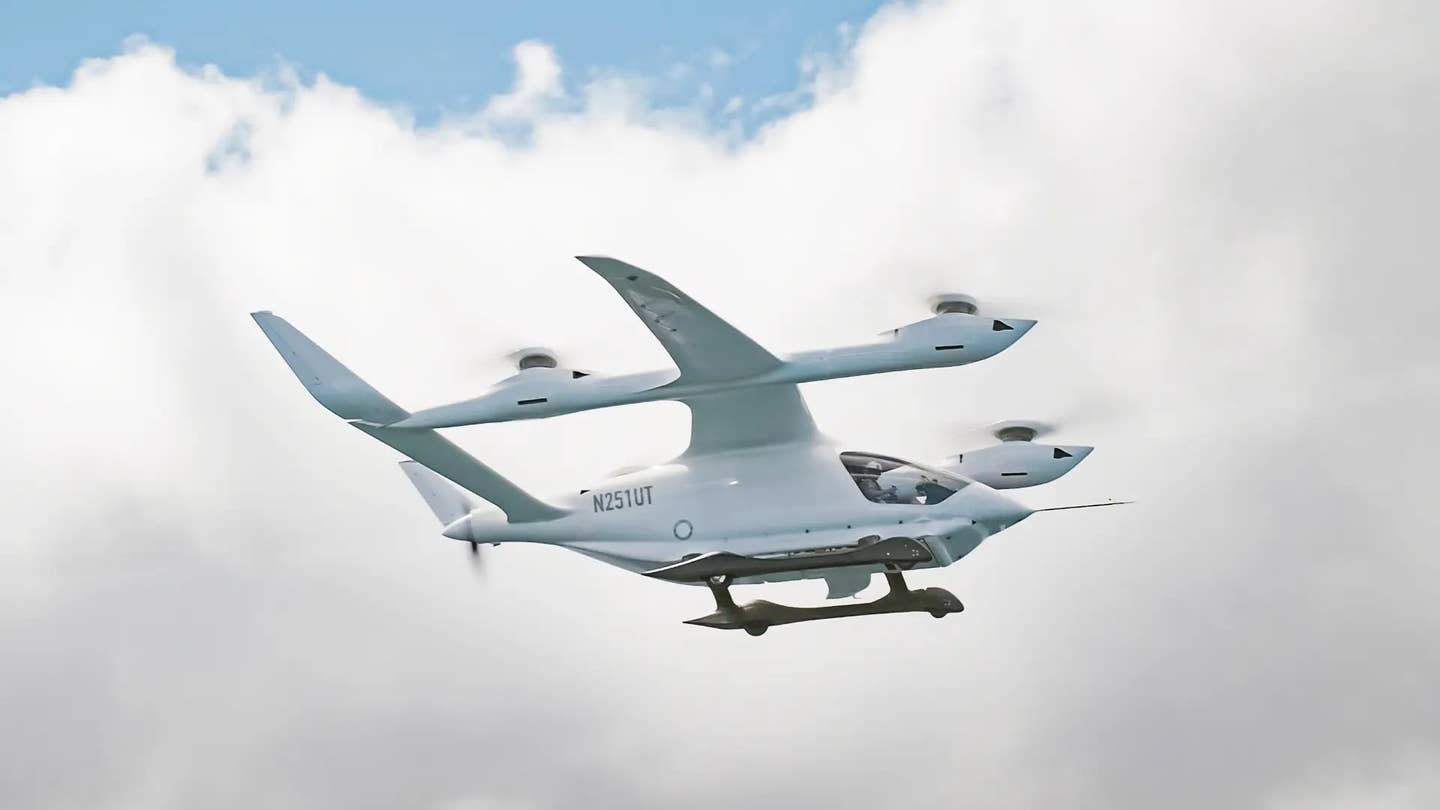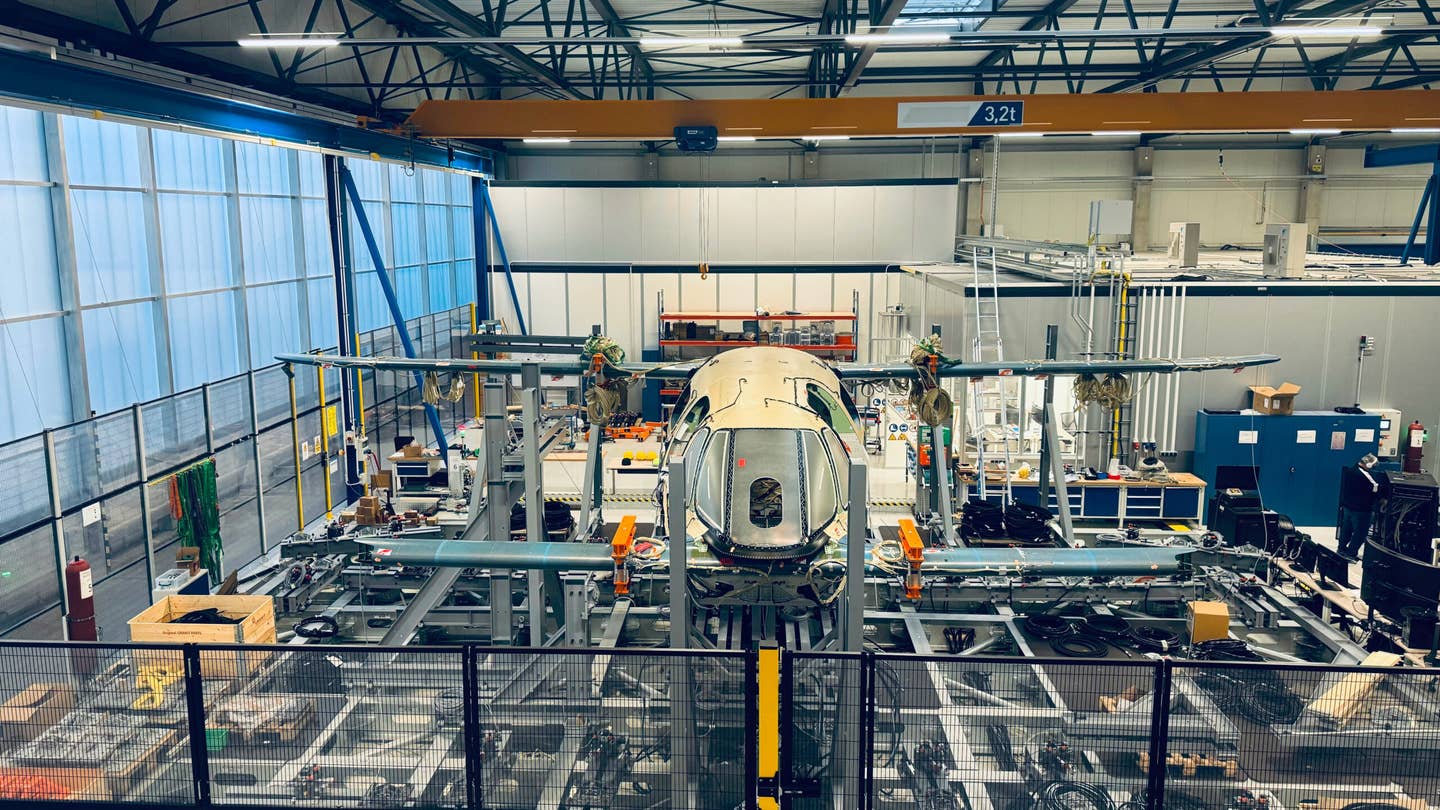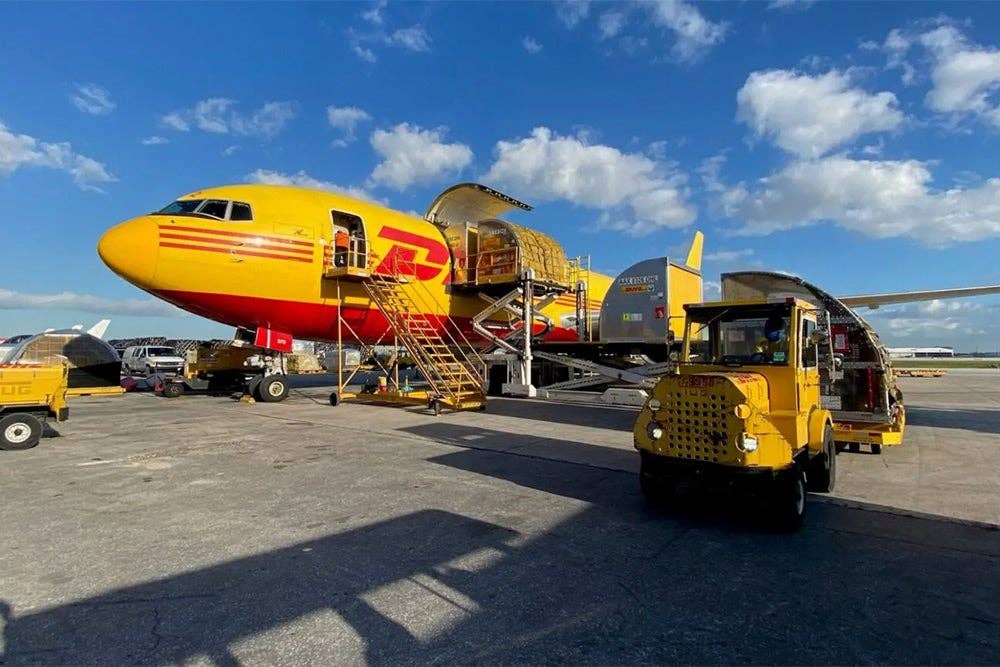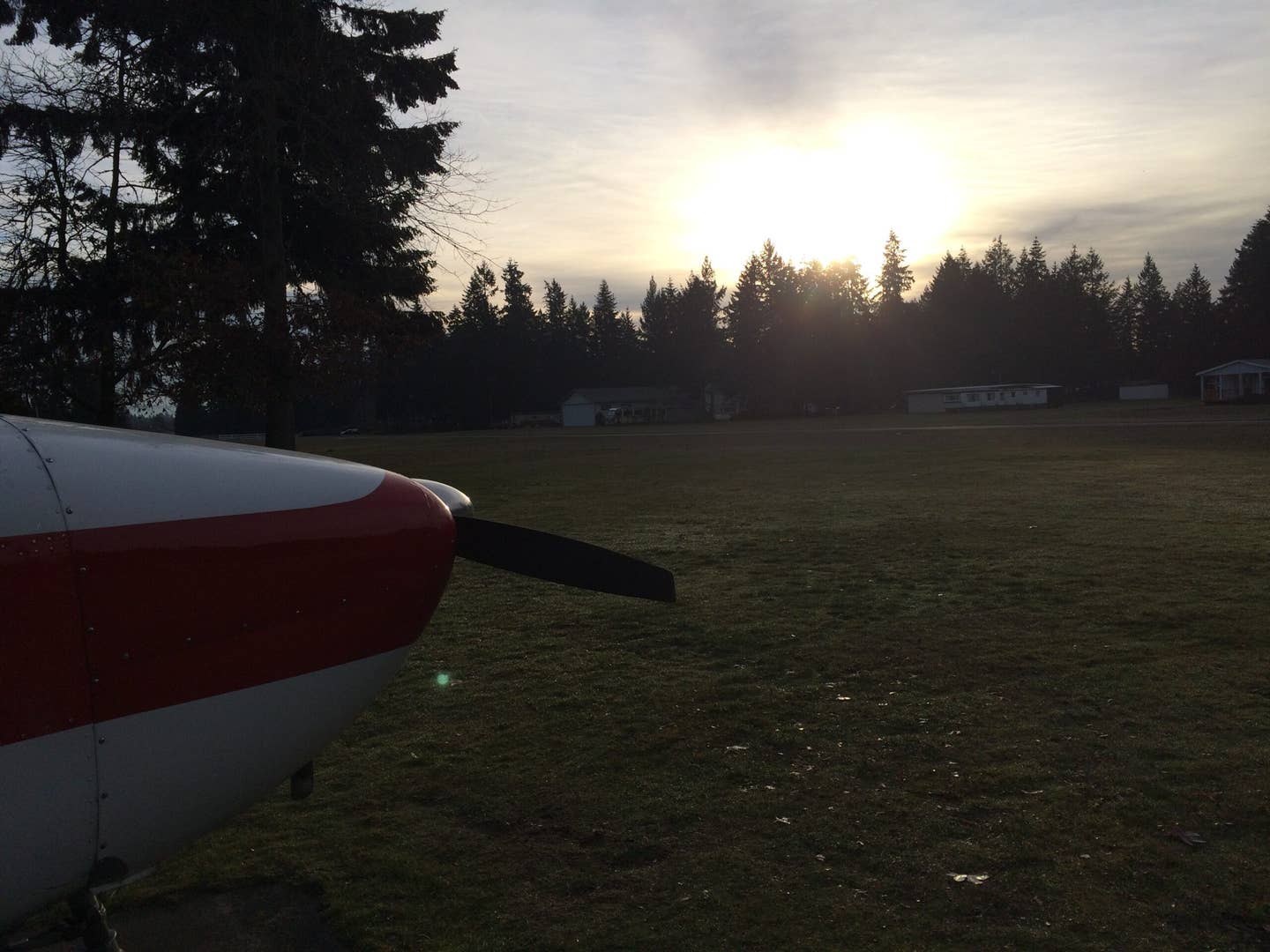
A group of kids in the TeenFlight program work on building a Van’s Aircraft RV-12. Credit: Meg Godlewski
It’s a rainy October evening at Pierce County-Thun Field (KPLU), a non-towered airport located approximately 40 miles south of Seattle. About an hour before sunset, a group of teens show up at Hangar Number 6 and immediately get to work.
These kids are part of TeenFlight and they’re building a Van’s Aircraft RV-12.
The program runs from September to June. By the end of the year, most of the students will have put in approximately 200 hours of build time.
“Don't forget to sign in,” cautions building project manager Marv Scott as the kids enter. “And don’t forget to sign your work,” he adds, pointing to initials done in ink on the firewall of an aircraft under construction. The initials of the builders are all over the aircraft, says Scott, as a means of accountability, and, he adds, “It’s important for the kids to take pride in their work.”
TeenFlight, now in its 10th year, is open to high school students from the greater Seattle area. According to Kevin Behrent, TeenFlight’s president and CEO, the teens meet twice a week to build the RV-12.
The hangar is filled with RVs in various states of completion. The program’s first aircraft, named TF, is an RV-12ULS. Three more RV-12ULSs followed, along with three RV-12iSs. The group also had a chance to finish a standard RV-9A kit (TF5) that was supplied by a customer.
TF1 they still have. The rest of them have been sold, and the proceeds from the sales are used to purchase kits, avionics, engines, tools—everything you need to build an airplane.
The funds for the very first airplane were supplied by Alaska Airlines and through Alaska’s then-president and CEO Brad Tilden’s private foundation. Both the airline and the Tilden Foundation are still sponsors, along with:
- Boeing
- Cascadia Software
- The Puget Sound Antique Aircraft Association
- Van’s Aircraft
- Dynon
- Microsoft
- The Washington Pilots Association
COVID Challenges
When the pandemic hit, TeenFlight—like everything else in Washington state—was locked down.
According to Behrent, eventually, there were weekly Zoom meetings because the kids really missed each other and the socialization aspect of the program.
In December 2020, the decision was made to reopen the program, with precautions.
“We formed a plan to bring the students back in small groups of four students with only two mentors who had already been vaccinated,” Behrent says. “Each student had to wear a mask, gloves, have their temp checked and recorded at the door.
“All parts, hardware and tools for the night’s build were pre-sanitized and laid out for them. At the conclusion of the build, all parts and tools were sanitized once again after the students left and the entire hangar was fogged with a sanitizer certified to kill COVID. As restrictions began to be lifted in Washington, we started to combine the teams and eventually were able to bring all the students back together and continue with the traditional two nights per week. We continued to sanitize the hangar after each build.”
The teens meet for 2.5 hours at a time.
Usually the program has about 30 students. Approximately half of the group is lost each year to graduation, and another 15 to 20 students are brought in. This year, however, in response to COVID, the group was limited to 23 teens.
Each group has a sub assembly of the aircraft and a complete set of plans to work from. Behrent stresses that the kids—not the adults who supervise them—are the ones doing the actual building.
“This is a workplace environment and teamwork is key,” he says, adding that because it is a job, the teens have to interview to be accepted into the program.
The teens and their parents are part of the interview process. There’s an essay, and grades are considered.
“If they don’t take school seriously, there is a question if they will take this seriously,” Behrent says, adding that sometimes the teen may have excellent grades, but they are already overloaded with extracurricular activities, like sports.
“We tell them to think of this like another sport in terms of time commitment,” he explains.
“TeenFlight has to be a priority,” Scott adds, because the kids work in teams of two to four and each team member is expected to pull his or her weight.
One of the most challenging aspects of the program is transportation. The kids—and their parents— have to come up with a way to get them to and from the hangar. Some of the kids have a commute of an hour or more one way.
Looking Toward the Future
Each group works from a build manual for the aircraft. They begin construction by carefully identifying all the components necessary for the build. They make sure they have everything they need before they begin, from components to the appropriate tools and safety gear, then flip ahead a few pages.
The bigger picture is important, Scott says.
“They have the plans for the part they are working on, then they have to read ahead in the manual to see how the parts work together.”
The kids who are in the second or even third year of the program act as mentors for the first-year team members. Talking is kept to a minimum, with the exception of discussion of the task at hand, but when asked, they tell you about their plans for the future.
“I haven’t decided between being an aviation mechanic or an engineer,” says Mariel Howe, who is in her third year of the program. She was working on the canopy alignment that evening.
Roman Minetto, a 10th-grader, says he has already made up his mind, announcing he plans a career as an aerospace engineer.
Nora Tarbox is already looking forward to a career in air traffic control.
Skills to be Gained
During the year, the teens have the opportunity to learn a plethora of vocational skills, like metal fabrication, electronics, and avionics. They also learn how reciprocating engines work and how to understand technical drawings and instructions.
The program also teaches them public speaking and presentation skills. All members must attend the annual Northwest Aviation Conference, a local indoor trade show usually held in February at the Washington State Fair Events Center in Puyallup.
Often the team brings one of its aircraft for display. The teen’s mission at the event is to tell others about the program.
“It is also a networking event,” notes Behrent, as the conference is very much a career fair. “They have a chance to meet people who are already working in the industry.” Often the connections the teens make at the event lead to internships and job-shadowing opportunities.
Hurry Up and Wait
The smaller build team isn’t the only COVID-triggered challenge the group faces. Supply chain issues are felt very keenly, as it can take several weeks to months before ordered items such as avionics and engines are shipped. In addition, the teens are learning to work with the FAA to get the aircraft inspected and certified before they can be sold.

Sign-up for newsletters & special offers!
Get the latest FLYING stories & special offers delivered directly to your inbox






